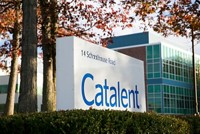Advertisement
Grab your lab coat. Let's get started
Welcome!
Welcome!
Create an account below to get 6 C&EN articles per month, receive newsletters and more - all free.
It seems this is your first time logging in online. Please enter the following information to continue.
As an ACS member you automatically get access to this site. All we need is few more details to create your reading experience.
Not you? Sign in with a different account.
Not you? Sign in with a different account.
ERROR 1
ERROR 1
ERROR 2
ERROR 2
ERROR 2
ERROR 2
ERROR 2
Password and Confirm password must match.
If you have an ACS member number, please enter it here so we can link this account to your membership. (optional)
ERROR 2
ACS values your privacy. By submitting your information, you are gaining access to C&EN and subscribing to our weekly newsletter. We use the information you provide to make your reading experience better, and we will never sell your data to third party members.
Business
Lilly to invest $5.3 billion in Indiana to ramp up production of Zepbound, Mounjaro
Firm’s weight-loss and anti-diabetes drugs have run into shortages due to explosive demand
by Aayushi Pratap
May 31, 2024
| A version of this story appeared in
Volume 102, Issue 17

To meet astronomical demand for its weight-loss and antidiabetes drugs, Eli Lilly and Company says it will double its investment at a drug active-ingredient manufacturing site now under construction in Lebanon, Indiana.
The company will inject an additional $5.3 billion, increasing its total investment in the site to $9 billion. The expansion will boost the production of tirzepatide, the peptide-based active pharmaceutical ingredient (API) used in Zepbound and Mounjaro, weight-loss and antidiabetes medicines that the US Food and Drug Administration approved in 2023 and 2022, respectively.
Construction of the Indiana facility began in 2023. Lilly expects to start manufacturing at the site in 2026 and says it will increase production over the subsequent years. Once the facility is fully operational, it will employ 900 workers, including engineers, scientists, operating personnel, and lab technicians.
Since 2020, Lilly says, it has committed to spending $16 billion on new manufacturing sites in the US and Europe.
In a press release, Lilly CEO David A. Ricks says the overall project is “the largest manufacturing investment in our company’s history and, we believe, represents the single largest investment in synthetic medicine API manufacturing in US history.”
The investment comes as Lilly and Novo Nordisk, which manufactures the competing peptide-based drugs Wegovy and Ozempic, struggle to keep up with demand.
While Novo Nordisk makes its active ingredient, a peptide called semaglutide, in-house, Lilly often outsources the synthesis of parts of tirzepatide to companies such as WuXi AppTec. The new investment may increase Lilly’s ability to make the peptide in-house.
The two companies also use different approaches to make their peptides. Lilly and its contractors use a method called solid- phase synthesis to make tirzepatide, a process that requires large volumes of solvents such as N, N-dimethylformamide and N-methyl-2-pyrrolidone.
Novo Nordisk, on the other hand, employs yeast-based fermentation to engineer semaglutide, which it then chemically modifies. Experts have pointed out that Novo Nordisk’s approach is likely less solvent-intensive.
Both peptides mimic the natural body hormone glucagon-like peptide-1 receptor (GLP-1). The drugs regulate blood-sugar levels and reduce appetite, resulting in weight loss and antidiabetic benefits. In March, the FDA approved Wegovy for a new indication: cardiovascular conditions. Lilly is conducting trials to investigate the benefits of its own weight-loss drug for cardiovascular conditions.
The demand for both firms’ peptide drugs has skyrocketed since their approvals. Novo Nordisk estimates that, in 2020, 890 million people were eligible for its drug. Reports from Goldman Sachs suggest that annual sales in the category could hit $100 billion by 2030. The drugs have run into repeated shortages.
Last year, Novo Nordisk recorded $18.4 billion in combined sales of Wegovy and Ozempic. Lilly reported $5.3 billion in combined sales of Zepbound and Mounjaro.
With its latest expansion, the company’s total investment in making Zepbound and Mounjaro has surpassed $18 billion, Lilly says. The company invested an additional $1.2 billion to update existing facilities in Indianapolis and recently acquired an injectable drug facility in Wisconsin.
But questions still remain about how Lilly plans to ramp up the fill-and-finish of its weight-loss and diabetes injectables, for which it relied at least in part on Catalent, a company that Novo Nordisk agreed to acquire this year. The deal is currently being scrutinized by antitrust regulators at the US Federal Trade Commission. The European Union’s drug regulator told Reuters that it will assess the impact of the deal on the availability of all medicines processed at Catalent.




Join the conversation
Contact the reporter
Submit a Letter to the Editor for publication
Engage with us on Twitter